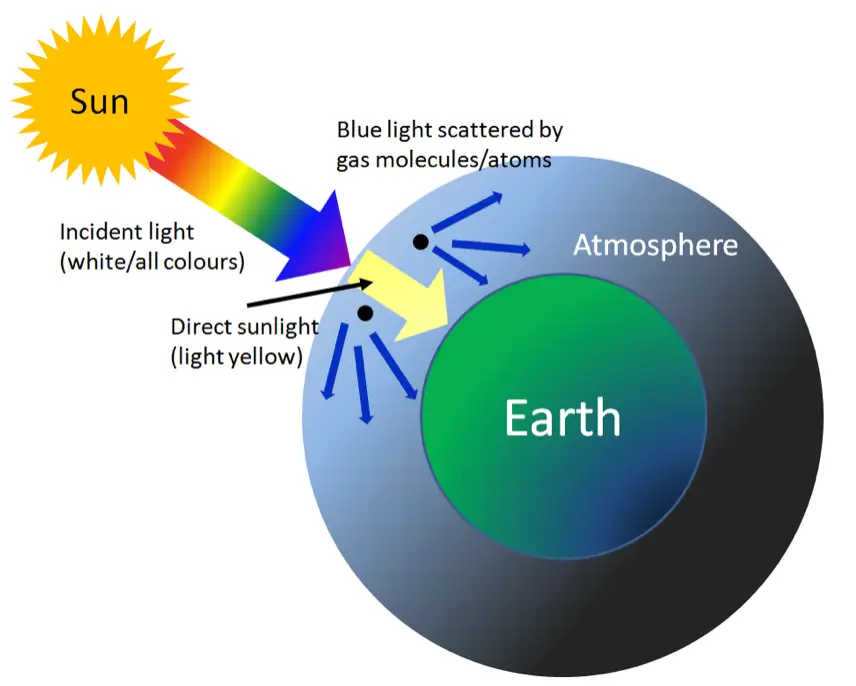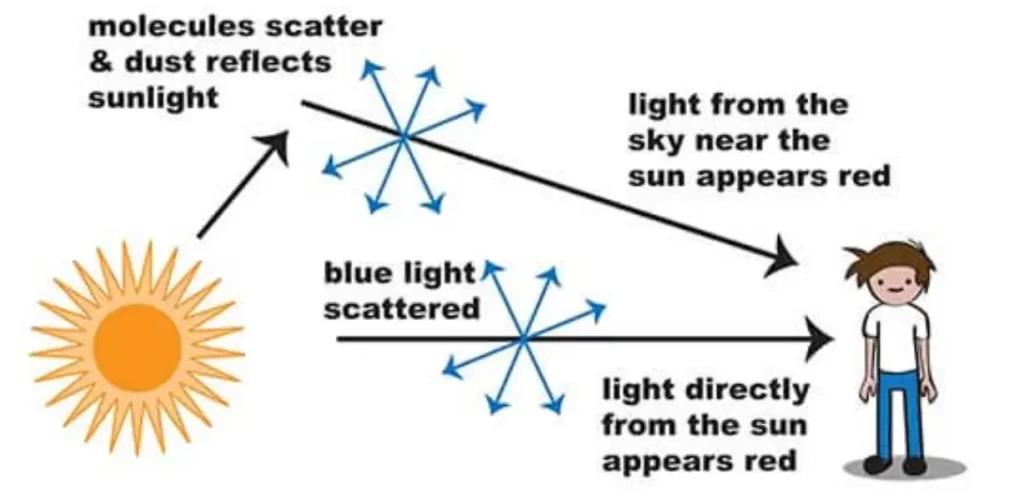The phenomenon of the sky appearing blue has fascinated humans for centuries, prompting numerous scientific inquiries into its underlying physics. While it may seem like a simple question, the answer lies in the intricate interactions between sunlight, Earth’s atmosphere, and the human eye. In this article, we will delve into the physics behind why the sky appears blue, exploring the processes of scattering, wavelengths of light, and the role of our atmosphere.
Scattering of Light:

The primary reason for the blue appearance of the sky is the scattering of sunlight by molecules and particles in Earth’s atmosphere. This scattering phenomenon, first explained by Lord Rayleigh in the 19th century, occurs when light interacts with particles that are much smaller than the wavelength of the light. In the case of the atmosphere, the particles responsible for scattering are mainly nitrogen and oxygen molecules, along with other particulates such as water vapour and dust.
Rayleigh Scattering Formula:
The intensity of scattered light, I, is inversely proportional to the fourth power of the wavelength, λ, and is given by Rayleigh’s scattering formula:

Wavelength Dependence:
According to Rayleigh’s formula, shorter wavelengths of light are scattered more effectively than longer wavelengths. This is because shorter wavelengths, such as blue and violet light, have higher frequencies and thus interact more strongly with the particles in the atmosphere. As a result, blue light is scattered much more than red or yellow light, leading to the predominantly blue appearance of the sky.

Perception by the Human Eye:
Another crucial aspect of why the sky appears blue lies in the way our eyes perceive colour. The human eye contains specialised photoreceptor cells called cones, which are sensitive to different wavelengths of light. There are three types of cones: red-sensitive, green-sensitive, and blue-sensitive. When sunlight enters the Earth’s atmosphere and undergoes scattering, the blue light is scattered in all directions, including towards the observer’s eye. As a result, we perceive the sky as blue due to the prevalence of blue light reaching our eyes.
Variations in Sky Colour:
While the sky typically appears blue during the day, variations in atmospheric conditions can lead to different hues and intensities of blue, as well as other colours. For instance, during sunrise and sunset, when the sun is positioned at a lower angle in the sky, the light must travel through a greater thickness of the atmosphere, causing more scattering of shorter wavelengths and allowing longer wavelengths (such as red and orange) to dominate, resulting in vibrant hues of red and pink.
Conclusion:
In conclusion, the blue appearance of the sky is a result of the scattering of sunlight by molecules and particles in Earth’s atmosphere, primarily governed by Rayleigh scattering. The shorter wavelengths of blue light are scattered more effectively, leading to the predominant blue hue of the sky. Combined with the perception of colour by the human eye, this phenomenon creates the awe-inspiring spectacle that has captivated observers for centuries. Understanding the physics behind the blue sky not only enriches our appreciation of nature but also provides valuable insights into the interactions between light and matter on a planetary scale.




